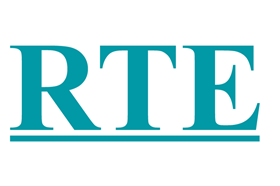Changes in reefer demand provide opportunities.

The demand for fresh produce, temperature-sensitive medicines, and other perishable goods is increasing worldwide. The result is that smaller marine terminals, once considered outside the regular traffic flow of traditional refrigerated cargo trades, are experiencing unprecedented growth. This evolution is excellent news for terminals serving these regions, using this trend to expand their business and benefit their local economies.
However, look out for unchecked challenges that can limit growth potential.
Let’s talk about that.
Although growth presents opportunities, it also brings challenges that are often concealed in outdated workflows, waiting to cause issues and disrupt progress.
A major inhibitor of reefer success is the reliance on manual inspections to log, track, and interact with every reefer that lands in the terminal. While this system may work fine for smaller and more manageable yards, as the number of containers increases, so do the points of failure – long periods between inspections, transposed recording of numbers, and incorrect temperature settings, to name a few.
And if the terminal uses a third-party maintenance crew to handle reefer mechanical concerns, what additional timing delays will this present once an issue is eventually discovered?
Left unaddressed, these are problems that can plague the aspiring terminal, inhibiting its advancement and diminishing valuable trust with potential and existing customers alike.
1) Identify the threats.
One astute team on the west coast of Africa recently recognized the potential pitfalls of growth well in advance. Wanting to get ahead of the curve to facilitate their continued success and avoid potential failures with customer cargo, SOGESTER terminals in Angola identified several areas of their process that needed to be addressed.
When Frans Jol, CEO of SOGESTER, reached out to RTE, reefer throughput was becoming an increasingly important part of their business operations, putting increased pressure on their team to maintain accurate information regarding the condition of every reefer in their care. However, relying on manual inspections had consequences as traffic grew. It became increasingly crucial for SOGESTER to avoid human errors. They also needed a more reliable way to notify shipping lines about reefer status and efficiently send active reefer alarms to third-party maintenance teams to initiate immediate action.
For these reasons, moving towards an automated system for gathering data combined with TOS integration became essential for effectively managing the growth of SOGESTER’s reefer operation. By incorporating two-way communication between each reefer and the terminal operations team, SOGESTER was confident they would overcome these challenges and increase operational efficiency and accuracy while increasing customer value through better service.
2) Implement a solution.
RTE assessed SOGESTER’s onsite infrastructure and reefer environment to develop a tailored approach to address each issue. RTE determined the best solution as GRASP with RRCE-D, an integrated reefer monitoring system that captures individual reefer data and reports real-time changes to a centralized server. The system also provides a user-friendly web-based interface for updating specific parameters for each reefer.
When choosing the right solution to meet these needs, Mr. Jol said, “Sogester chose [RTE’s] GRASP™3.0 system due to all its powerful functionalities, proven reliability, and easy integration capabilities.”
3) Always expect the unexpected.
With the problems identified and the solution laid out, RTE was ready to work to make reefer monitoring a reality for SOGESTER. But dark clouds created an additional unforeseen challenge. This one was huge.
Usually, RTE guides the local team during the physical installation process. Once done, RTE engineers visit the location to ensure all connections are in place and the system is powered up for the first time. Only when the system is fully configured and tested is it handed over to the customer as a fully functional system. But in this case, it was 2020, and COVID lockdowns and travel restrictions had different plans in store. This was never anticipated, and in nearly 40 years of performing reefer monitoring installations, it was entirely unprecedented.
Despite the challenges posed by the inability to be physically present on-site, the implementation must proceed. To ensure a successful launch, RTE used its decades of software engineering experience to adapt. Various teams collaborated to develop specific procedures and protocols for configuring the server and software. Additionally, they conducted remote testing of the system from their offices in New York.
The SOGESTER and RTE teams worked together effectively to complete the task. This experience provided valuable skills, knowledge, and resources to handle future situations effortlessly.
Importantly, cargo flow at the SOGESTER terminals remained unaffected during installation and testing. RTE’s reefer monitoring systems can be installed simultaneously during full-scale reefer operations, resulting in zero downtime for each terminal. GRASP hardware and software operate independently of the terminal’s operations but integrate easily to provide visibility and efficiency.
4) Enjoy the results.
SOGESER implemented RTE’s GRASP reefer monitoring solution to enhance its reefer handling capabilities. According to Mr. Jol, the solution met all of their pre-monitoring requirements, such as providing a daily reefer data report that can be customized and shared with shipping lines to maintain customer trust. Real-time alerts are also sent to the maintenance management team for quick response to reefer alarms.
RTE is proud to have played a part in this success.
5) Count on long-term support.
To maximize system utilization, RTE engineers remain available for all post-implementation support, including training and troubleshooting. The GRASP system development, especially the software, is customer-driven. Reliance on the end-user applying the system to its fullest potential and delivering useful feedback provides RTE with valuable information for continuous improvement upgrades. For this reason, open communication between RTE and the end-user is vital and is actively encouraged.
Ready to begin your own journey toward reefer growth? Schedule a demonstration of our GRASP Reefer Monitoring platform today.











